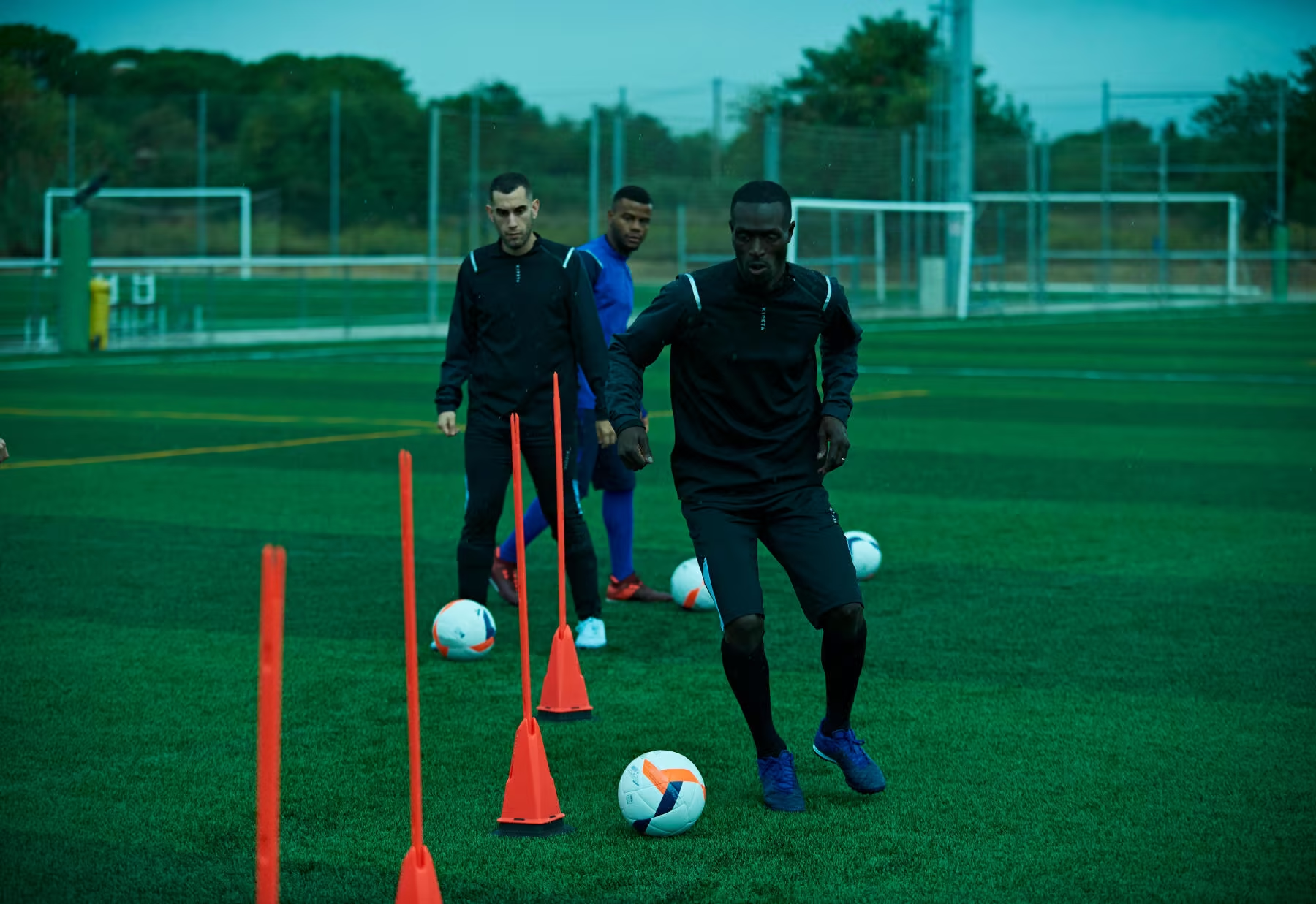Endurance training is key for anyone looking to enhance their physical performance and achieve their fitness goals. By developing a solid training plan, focusing on nutrition, and incorporating strength exercises, you can significantly improve your endurance. Whether you’re a beginner or an experienced athlete, these tips will guide you on your running journey and help you push your limits.
As you progress, it’s crucial to pay attention to your body’s needs, including hydration and recovery. These strategies can prevent injuries and ensure you stay on track. By enhancing your running techniques and being mindful of your overall health, you’ll build stamina that lasts.
With the right approach, you can enjoy the process while achieving amazing results. Dive into our top tips for endurance training, and discover how to elevate your workouts to new heights.
Key Takeaways
- A solid training plan is essential for building endurance.
- Proper nutrition and hydration support performance and recovery.
- Strength training enhances overall physical fitness and injury prevention.
Developing a Solid Training Plan
Creating a solid training plan is essential for improving your endurance. Focus on setting realistic goals, gradually increasing your training volume, and incorporating a variety of workouts to keep you engaged.
Setting Realistic Goals
Start by establishing clear and achievable goals. Decide whether you’re training for a marathon, half-marathon, or ultramarathon. Break your main goal into smaller milestones. For example, if you aim to run a marathon, set a goal to complete a specific distance each month. This approach allows you to monitor progress while staying motivated.
Use the SMART criteria to keep your goals specific, measurable, achievable, relevant, and time-bound. This clarity helps you focus on what matters most.
Training Volume and Gradual Adaptation
When developing your training plan, consistency is key. Gradually increase your training volume, aiming for a 10% increase in mileage each week. This helps prevent injuries and allows your body to adapt.
Make sure to include a long run each week. This is essential for building endurance and improving stamina for longer races. Swap between long runs and shorter, more intense workouts like tempo runs or interval training.
Monitor how your body responds to the increased volume. Adjust your plan as needed to avoid overtraining.
Incorporating Variety in Training
To build endurance effectively, include a mix of workouts in your training plan. Incorporate speed work, such as intervals or tempo runs, to enhance your aerobic capacity. This not only boosts your endurance but also keeps your sessions interesting.
Include cross-training activities like cycling or swimming. These workouts provide a break from running while still improving your fitness and endurance. They also reduce the risk of injury and help strengthen different muscle groups.
Make your training plan dynamic by rotating different types of workouts each week. This variety keeps your body challenged and engaged.


Nutrition and Hydration Strategies
Proper nutrition and hydration are key for successful endurance training. You need to focus on the right balance of carbohydrates, nutrients, and fluids to boost performance and recovery.
Understanding the Role of Carbohydrates
Carbohydrates are essential for endurance athletes. They serve as your primary source of energy during long workouts. Aim to consume 3-5 grams of carbohydrates per kilogram of body weight each day to fuel your training.
After exercise, your body needs to replenish its glycogen stores. A good guideline is to eat 1-1.2 grams of carbohydrates per kilogram of body weight within the first few hours post-training. This helps speed up recovery and prepares you for your next workout.
Balanced Diet and Nutrient Timing
A balanced diet is vital for endurance training. Focus on whole foods that include fruits, vegetables, whole grains, and lean proteins. These foods provide the vitamins and minerals necessary for good health and performance.
Nutrient timing is also important. Eat a mix of carbohydrates and protein before and after workouts. This can help improve energy levels and muscle recovery. For example, a snack like a banana with peanut butter is a good pre-workout option.
Staying Hydrated
Staying hydrated is crucial for maintaining performance. You should drink 16-24 ounces of fluid for every pound of body weight lost during exercise. Including electrolytes, like sodium, in your drinks can help with fluid retention.
Before exercise, aim to drink 10.5 to 21 ounces of water 2 to 4 hours in advance. This ensures you start hydrated. During exercise, drink 6-12 ounces every 20 minutes. After your workout, continue to hydrate to recover effectively. Keep these guidelines in mind to support your training.
Strength and Conditioning
Strength and conditioning are crucial for improving your endurance performance. A well-rounded approach helps build muscular strength, enhances power, and boosts overall fitness. Incorporating various training methods can lead to better stamina and prevent injuries.
Importance of Strength Training
Strength training is essential for developing muscular endurance. It allows you to perform exercises at a higher intensity for longer periods. Key benefits include improved running economy and reduced fatigue.
Focus on compound movements like squats, deadlifts, and bench presses. These exercises engage multiple muscle groups and maximize strength gains. Aim for moderate weights with higher repetitions (around 8-12 reps). This helps build endurance without excessive mass gain.
Remember to incorporate rest days to allow muscles to recover, which is vital for gaining strength. Consistent strength training will translate into better performance in your endurance activities.
Plyometrics and Core Workouts
Plyometric training enhances your explosive strength and overall athleticism. It consists of quick, powerful movements that improve speed and efficiency, critical for endurance sports. Activities like box jumps, burpees, and jump squats are effective.
Core workouts are equally important. A strong core stabilizes your body and improves your running posture. This minimizes energy wastage and helps maintain form during long events. Include exercises like planks, Russian twists, and bicycle crunches in your routine.
Perform these workouts 1-2 times a week. This balanced approach boosts both power and stability in your endurance training.
Flexibility and Mobility Exercises
Flexibility and mobility exercises play a vital role in your training. They help improve your range of motion and reduce the risk of injuries. Key exercises include dynamic stretches, foam rolling, and yoga.
Dynamic stretches are effective as part of your warm-up. Movements like leg swings and arm circles prepare your muscles for action. After workouts, foam rolling can alleviate tightness and promote muscle recovery.
Incorporate yoga to enhance your flexibility and mindfulness. This practice helps with both physical and mental aspects of endurance training. Aim for at least one yoga session weekly to support your overall performance.
Enhancing Running Techniques and Economy
Improving your running technique can significantly boost your endurance and overall performance. Focusing on proper form, effective breathing, and specific workout strategies will enhance your running economy and efficiency.
Mastering Proper Running Form
Your running form plays a crucial role in endurance. Keep your head up and look forward with your chin parallel to the ground. This helps maintain a neutral position, reducing strain on your neck and shoulders.
Focus on your shoulders—they should be relaxed, not hunched. Your arms should swing naturally at your sides, with elbows bent at about 90 degrees.
Pay attention to your foot strike. Aim for a midfoot strike, which can lessen impact and improve running efficiency. Engaging your core muscles while running helps maintain alignment and can lead to better performance over time.
Breathing Techniques and Oxygen Utilization
Effective breathing techniques can enhance your oxygen delivery, crucial for endurance. Focus on deep belly breathing rather than shallow chest breathing. This allows you to take in more oxygen, which fuels your muscles.
Try a rhythmic breathing pattern, such as inhaling for three steps and exhaling for two. This keeps your breaths steady and prevents fatigue.
Also, practice breathing through both your nose and mouth, especially during longer runs. This can increase airflow and help maintain your endurance levels during intense workouts.
Learning from Fartleks and Yasso 800s
Fartlek training involves varying your speed throughout a run. This method helps improve your running economy by pushing you to adapt to different paces. By integrating bursts of speed, you can enhance your ability to sustain a faster pace over time.
Yasso 800s are another effective workout. This training consists of running 800 meters at a hard pace, followed by equal recovery time. For instance, if you aim to run an 800 in four minutes, you rest for four minutes. This workout builds endurance and helps you gauge your marathon pacing.
Incorporating these techniques into your training can lead to improved performance and better running economy.


Recovery and Injury Prevention
Recovery and injury prevention are key parts of effective endurance training. Taking the right steps can help you recharge your body and lower the risk of injuries that can sidetrack your progress. Here’s how to focus on these important areas.
The Role of Recovery Runs
Recovery runs are an essential element in your training plan. These runs allow you to maintain fitness while giving your body a chance to recover. You should keep your pace at a conversational level, ensuring you are not pushing too hard.
Aim for a distance of 3 to 5 miles at this easy pace. This helps improve blood flow to sore muscles, enhances nutrient delivery, and supports recovery of your immune system. Recovery runs should feel comfortable and rejuvenating.
Importance of Sleep and Rest Days
Adequate sleep plays a vital role in your recovery process. Aim for 7 to 9 hours of quality sleep each night to help your body repair itself. Sleep helps restore energy levels and boosts your immune system, making you less prone to illnesses.
Incorporating rest days into your routine is equally important. These days allow your muscles to recover and rebuild after intense training. Use this time to perform light activities or engage in dynamic warm-up exercises, which can improve flexibility and prepare your body for more strenuous workouts.
Strategies for Injury Prevention
To prevent injuries, focus on creating a balanced training routine. Gradually increase your mileage each week, capping it at around 10%. This helps reduce the strain on your body and minimizes the risk of overuse injuries.
Incorporating strength training and flexibility exercises into your routine is also crucial. Strong muscles support joints and can prevent injuries. Always start your workouts with a dynamic warm-up to prepare muscles and improve your range of motion. Listening to your body and not ignoring pain is key to staying injury-free.
Frequently Asked Questions
Understanding endurance training can help you improve your performance. Below are answers to common questions that can guide your training.
How can beginners effectively increase their running stamina?
Start with a mix of walking and jogging. Gradually increase your jogging time. Aim for consistency by running three to four times a week. Incorporate rest days to allow your body to recover.
What are the most effective exercises for boosting endurance?
Focus on exercises like running, swimming, and cycling. Bodyweight exercises, such as lunges and squats, also help improve muscular endurance. Mix different workouts to challenge your body and prevent boredom.
What is the best way to structure an endurance training program?
Begin with a warm-up to prevent injuries. Follow with your main activity, focusing on gradually increasing intensity. End with a cool-down to help recovery. Schedule workouts to include both long and shorter sessions.
How do you maximize the benefits of endurance training?
Stay hydrated and eat a balanced diet rich in carbohydrates, proteins, and healthy fats. Keep a training log to track your progress. Listen to your body and adjust your routine based on how you feel.
What methods are proven to develop running endurance?
Long, slow runs build your base endurance. Interval training enhances speed and stamina. Hill workouts strengthen muscles and improve cardiovascular fitness.
Which training techniques build the most endurance for athletes?
Circuit training with short rest periods is effective. High-repetition strength exercises help increase muscular endurance. Cross-training with various activities can also improve overall fitness and endurance levels.




